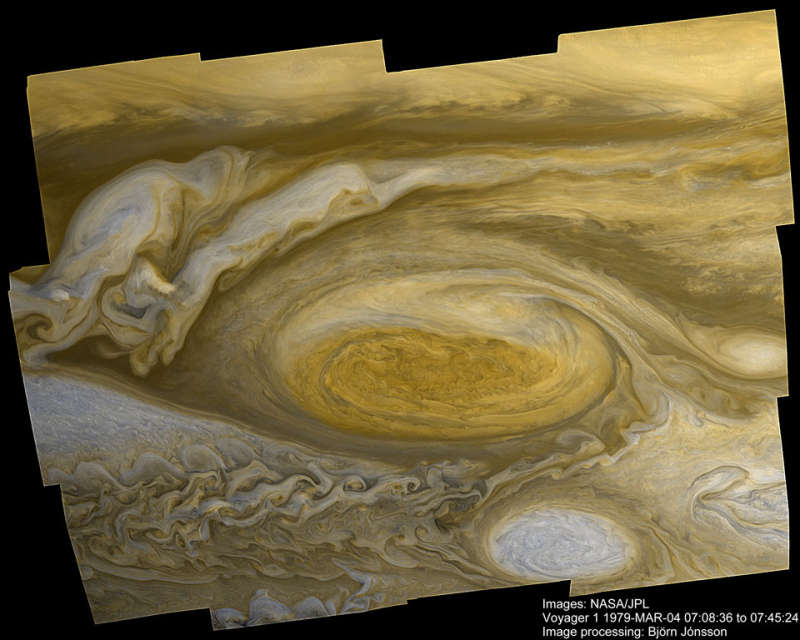
|
Explanation: What will become of Jupiter's Great Red Spot? Recorded as shrinking since the 1930s, the rate of the Great Red Spot's size appears to have accelerated just in the past few years. A hurricane larger than Earth, the Great Red Spot has been raging at least as long as telescopes could see it. Like most astronomical phenomena, the Great Red Spot was neither predicted nor immediately understood after its discovery. Although small eddies that feed into the storm system seem to play a role, a more full understanding of the gigantic storm cloud remains a topic of continued research, and may result in a better understanding of weather here on Earth. The above image is a digital enhancement of an image of Jupiter taken in 1979 by the Voyager 1 spacecraft as it zoomed by the Solar System's largest planet. NASA's Juno spacecraft is currently heading toward Jupiter and will arrive in 2016.
Poll:
Do you like APOD's leading question?
|
January February March April May June July August September October November December |
| ||||||||||||||||||||||||||||||||||||||||||||||||
NASA Web Site Statements, Warnings, and Disclaimers
NASA Official: Jay Norris. Specific rights apply.
A service of: LHEA at NASA / GSFC
& Michigan Tech. U.
Based on Astronomy Picture
Of the Day
Publications with keywords: Jupiter - Great Red Spot
Publications with words: Jupiter - Great Red Spot
See also:
- APOD: 2025 April 2 Á Jupiter and Ring in Infrared from Webb
- APOD: 2025 March 9 Á Cyclones at Jupiters North Pole
- APOD: 2025 February 16 Á Perijove 11: Passing Jupiter
- Stereo Jupiter near Opposition
- APOD: 2024 November 3 Á Jupiter Abyss
- APOD: 2024 May 19 Á Jupiter Diving
- APOD: 2024 April 21 Á Perijove 16: Passing Jupiter
